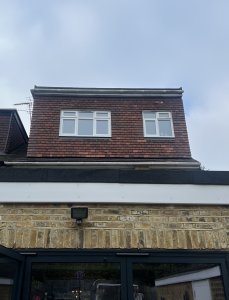As housing prices continue to climb in London & Essex space becomes a premium, homeowners are increasingly turning to loft conversions to expand their living space. Converting your loft not only adds valuable square footage to your home but can also significantly increase its value. Here’s a comprehensive guide to help you navigate the process of transforming your loft into a functional and stylish space.
Why Consider a Loft Conversion?
- Maximize Existing Space: Utilise the unused attic space instead of extending outwards.
- Increase Property Value: Loft conversions can increase the value of your home by up to 20%.
- Avoid Moving Costs: Save on the cost and hassle of moving to a larger home.
- Versatility: Loft spaces can be transformed into bedrooms, home offices, gyms, or playrooms.
Types of Loft Conversions
Dormer Loft Conversion:
- Pros: Adds floor space, suitable for most UK properties.
- Cons: Requires planning permission and can be more costly.
- Best For: Semi-detached, terraced houses, and detached homes.
Hip to Gable Loft Conversion:
- Pros: Ideal for increasing space in properties with a hipped roof.
- Cons: Limited to detached or semi-detached houses.
- Best For: Semi-detached and detached houses with hipped roofs.
Velux (Roof Light) Loft Conversion:
- Pros: Least expensive, minimal structural alterations, usually does not require planning permission.
- Cons: Does not add as much space as other conversions.
- Best For: Homes with enough existing headroom.
Mansard Loft Conversion:
- Pros: Maximizes space, aesthetically pleasing.
- Cons: More expensive and requires significant structural changes.
- Best For: Older properties, period homes.
Planning Permission and Building Regulations
Most loft conversions are considered permitted development, meaning they don’t require planning permission. However, it’s essential to check with your local council as restrictions can apply, particularly in conservation areas or listed buildings.
Building regulations approval is required to ensure safety and compliance with standards. Key areas of focus include:
- Structural integrity: Ensuring the loft can support the added weight.
- Fire safety: Installing fire-resistant doors and escape routes.
- Insulation: Proper insulation for energy efficiency.
- Staircase installation: Safe and accessible staircase design.
Design Considerations
- Headroom: Ensure there’s sufficient headroom, typically a minimum of 2.2 meters.
- Natural Light: Incorporate windows, skylights, or dormers to maximize natural light.
- Storage Solutions: Custom-built storage can make the most of awkward spaces and eaves.
- Heating and Ventilation: Proper heating and ventilation are crucial for comfort.
- Aesthetics: Choose finishes and fittings that complement the rest of your home.
Costs and Financing
The cost of a loft conversion varies based on the type, size, and complexity. On average:
- Velux conversion: £15,000 – £20,000
- Dormer conversion: £30,000 – £60,000
- Hip to gable conversion: £40,000 – £65,000
- Mansard conversion: £45,000 – £70,000
Financing options include savings, remortgaging, or home improvement loans. It’s advisable to get detailed quotes from multiple builders and ensure they are covered by insurance.
Finding the Right Professional
Choose a builder with experience in loft conversions, preferably one who can provide references and show previous work. Look for membership in professional bodies such as the Federation of Master Builders (FMB) or the Chartered Institute of Building (CIOB).
A loft conversion is a smart investment for UK homeowners looking to add space and value to their property. With careful planning, a clear understanding of regulations, and a focus on quality design, you can transform your attic into a beautiful and functional part of your home.
Party Wall Surveyors – we are not Architects, Engineers or Builders so we cannot design or build your loft conversion. However, we do have significant experience with the Party Wall Act 1996 and we can help you with that aspect of your project. Dealing with neighbours can be difficult during building works and you do need to issue legally valid notices; otherwise the process can become unnecessarily expensive. We can assist and will always try to make the process as smooth sailing as possible, whilst always complying with the requirements of the Act.
